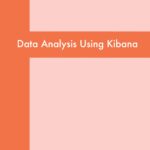In the intricate world of computer science, the efficiency of an algorithm is a cornerstone. This is where Big O Notation comes into play, serving as a crucial tool in understanding and improving the performance of algorithms. Whether you’re a budding programmer or a seasoned coder, mastering Big O can significantly enhance your coding skills. Let’s dive into this fundamental concept and unravel its mysteries in simple terms.
Big O Notation
Big O Notation is a mathematical notation used to describe the performance or complexity of an algorithm. Specifically, it describes the worst-case scenario, and it’s used to describe the upper limit of the time or space an algorithm could take or use. This is a way to describe the efficiency of an algorithm, especially how its run time or space requirements grow as the input size (often noted as “n”) increases. It’s an upper bound on the time an algorithm takes to complete or the space it needs. The “O” in Big O stands for “Order of”. For example, if an algorithm has a time complexity of O(n), it means the time it takes to complete is proportional to the size of the input.
Example: Consider a simple algorithm for finding the maximum number in a list of numbers.
def find_max(numbers):
maximum = numbers[0]
for number in numbers:
if number > maximum:
maximum = number
return maximum
- If the list has 10 numbers, it checks 10 times.
- If the list has 1000 numbers, it checks 1000 times.
The time it takes grows linearly with the number of items in the list. We describe this using Big O Notation as O(n), where ‘n’ is the number of items in the list.
Time Complexity
Time Complexity is a way of representing the amount of time an algorithm takes to run as a function of the length of the input.
It is a measure of the amount of time an algorithm takes to complete its task. It’s like measuring how long a journey takes, but instead of miles, we’re dealing with the size of data.
- O(1) Constant Time: Imagine flipping a switch to light up a room. The action is quick and independent of the room’s size. Similarly, an O(1) algorithm takes the same amount of time, regardless of input size.
- O(n) Linear Time: Think of finding a name in a linear list. The time it takes depends on the list’s length. In programming, O(n) algorithms take time proportional to the input size.
- O(n²) Quadratic Time: Consider the task of greeting everyone in a party. You go to each person and have them greet every other guest. The time taken grows significantly with more guests, just like an O(n²) algorithm.
Example: Let’s compare two different algorithms:
- Linear Search: Look through each item until you find the one you’re looking for.
- If the list has 1 item, it checks once.
- If the list has 1000 items, in the worst case, it checks 1000 times.
- This is O(n) time complexity.
- Binary Search: On a sorted list, look at the middle item. If it’s not the right one, you eliminate half of the remaining items and repeat.
- If the list has 1000 items, you first check the middle, reducing the problem to 500 items, then 250, 125, and so on.
- This process grows logarithmically with the size of the input. We describe this as O(log n) time complexity.
Space Complexity
Space Complexity refers to how much memory an algorithm uses in relation to the size of its input.
Example: Consider two scenarios:
- Constant Space (O(1)): An algorithm that uses a fixed number of variables, regardless of the input size.
def calculate_average(numbers):
total = sum(numbers)
count = len(numbers)
return total / count
No matter how large the input list, it only ever needs two variables (total and count).
- Linear Space (O(n)): An algorithm that stores an amount of data proportional to the input size.
def duplicate_list(numbers):
new_list = []
for number in numbers:
new_list.append(number)
return new_list
If the input list has 10 items, new_list also has 10 items. If the input has 1000 items, new_list grows to 1000 items.
Common Big O Notations and Their Significance
Understanding different Big O notations helps in selecting the right algorithm for the right task.
- O(log n): Efficient than O(n), often seen in “divide and conquer” algorithms like binary search.
- O(n log n): Common in efficient sorting algorithms like Quick Sort and Merge Sort.
- O(n²): Seen in algorithms with nested loops, useful but less efficient for large inputs.
- O(2^n): Exponential growth, often found in algorithms that solve problems by trying all possibilities.
Tips on How to Analyze an Algorithm’s Complexity
To determine the Big O of an algorithm:
- Identify the worst-case scenario.
- Count the number of operations as a function of input size.
- Simplify the expression to its highest order term and determine its Big O notation.
Big O Notation is an essential part of understanding and improving the efficiency of algorithms. By categorizing algorithms based on their time and space complexity, we can make more informed decisions in our programming practices.
Now that you’ve got a primer on Big O Notation, why not try analyzing some algorithms yourself? Share your experiences or any questions in the comments. Happy coding!



